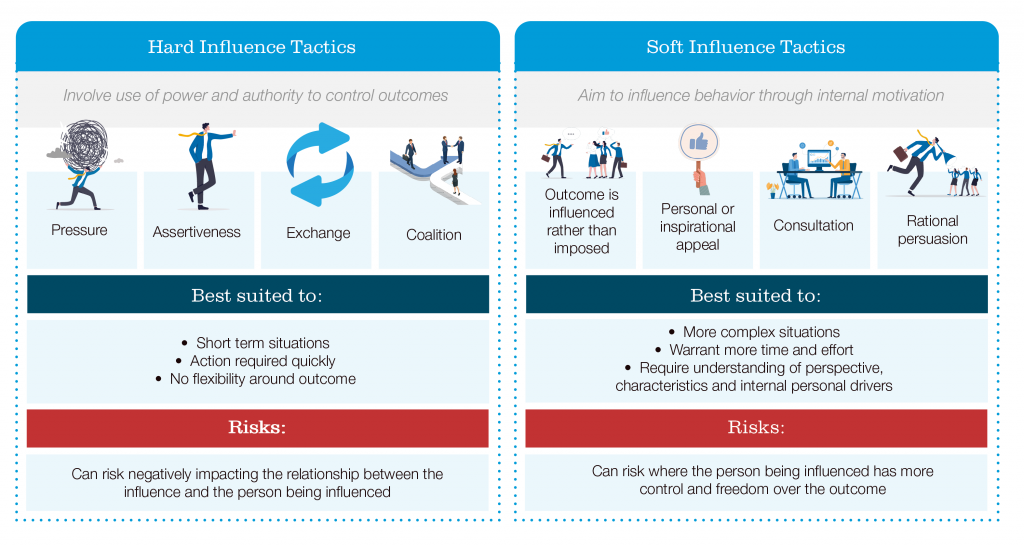- October 26, 2022

Influence is a vital part of leadership – to lead is to influence outcomes. The Cambridge Dictionary defines influence as affecting or changing how someone or something develops or thinks. It is essentially a powerful tool in getting what you want. In the workplace, influence may be required to garner support for a particular decision, plan or strategy. Tools and approaches to influence can come in various forms and successful leaders will understand which tactics are most effective in different situations to get the desired outcome.

When looking at a business environment, there are instances where each style of tactic has its place. If you think about different levels of leadership, CEOs might have a reputation for pursuing hard tactics, whereas a team leader may be viewed as a bit softer. However, both levels of management will need to deploy different influence techniques in order to successfully lead their teams. For example, a CEO may want to appeal to their employees’ values through company initiatives in order to improve satisfaction and employee retention, meanwhile a team leader may have to pull a hard line in cases where there is no flexibility, such as holiday requests. As an individual, managers may lean towards harder or softer tactics because that’s just what suits their personal style. That being said, to be an effective leader each role needs to recognise when the use of different tactics will be most successful in meeting the core objectives of what they are trying to achieve.
So what influence tactic is best suited to managing and sustaining change? Are we seeking reluctant compliance or enthusiastic support? ‘Inspirational appeal’ and ‘consultation’ in particular are thought to be highly effective in garnering support for a particular outcome. ‘Inspirational appeal’ aims to influence by appealing to the values and ideals of the other party to generate enthusiasm, as well as raise confidence levels on the success of the change. Through ‘consultation’ and involving the other party in how to go about the change, the person on the receiving end of the influence feels their opinion is valid and they are involved in the decision-making, which ultimately encourages them to take ownership over the agreed outcome. These soft tactics look to bring people on board with a change by altering behaviours and obtaining commitment, rather than just compliance.
However, there are still times when hard tactics are appropriate. For example, occasional one-off activities that require significant input, such as manual administrative and data gathering tasks, where internal motivation is going to be difficult to achieve and there is little to no flexibility on the completion of the task. It would be both challenging, and possibly even inauthentic, to adopt soft tactics in this instance. When using hard tactics, something to consider is what happens when the influencer is not there to oversee the behaviour? It may be that sustainability is not a key requirement in the case of short-term tasks, where the completion of these can be managed using authority, however sustainability is a key factor in the success of an overall solution. In order for a change to be long lasting, the people enacting the change need to want it and see the value in doing things differently, even better if they feel like the change is theirs.
“A great change leader creates other change leaders.” – Kotter
